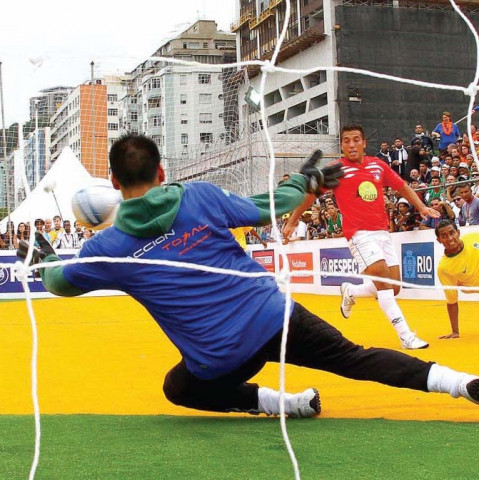Feature: Legends who live on the streets
The event is homeless and is an attempt to integrate them into mainstream society through football.

One has to look no further than football’s Homeless World Cup, whose ninth edition kicks off in Paris on Sunday, as a prime example of this fact. The event is only open to those who have been, or are, homeless and is an attempt to integrate them into mainstream society through football.
The driving force behind this unique endeavour is Mel Young, a leading social entrepreneur from Scotland who started The Big Issue, a magazine sold by homeless people on the streets. In 2001, Young and Harald Schmied, editor of an Austrian newspaper, came to the conclusion that the major challenge faced by the homeless, in addition to lack of shelter, was the feeling of being socially excluded from mainstream society.
Young and Schmied decided that a platform was required to bring the homeless together and give them a chance to enhance their self-esteem, which could kick-start their journey towards a happier life. To achieve this, they found football to be the perfect tool.
“We were looking for an international language that could unite them and found football to be the ideal medium,” Young told The Express Tribune. “It’s easy to play: anyone can start kicking around a football. Plus it’s inexpensive.”
The Homeless World Cup Foundation then developed local partners in each country, organising tournaments to bring homeless people together who would go on to represent their countries. These efforts bore fruit and led to the first Homeless World Cup in 2003 where 18 countries participated, with the hosts Austria lifting the trophy.
Since then, the event has gained popularity by not only becoming an annual feature but by spreading its wings and taking 53 countries under it. Its impact on its participants, the idea behind the venture, has been phenomenal. According to Young, around 80% of the players have gone on to take up regular jobs, turning their lives around.
For Pakistan, where homelessness is a major challenge, such an endeavour is the need of the hour. While not part of it at the moment, a Pakistani side may take part in next year’s World Cup with the Homeless World Cup Foundation in contact with a Lahore-based NGO.
Although not followed by millions, the Homeless World Cup has turned invisible people on the streets into champions on the football pitch. The feeling of self-worth that it’s created in them is this venture’s biggest victory.
Life-changing experience
Spain’s Modesto, who participated in the inaugural event, used to live on Madrid’s streets before he got a chance to transform his life. His experience is recounted in Young’s book Goal: The story of the Homeless World Cup.
“I’d never travelled out of Spain,” says Modesto. “It was wonderful meeting those in similar circumstances.” However, on his return, he found that the police had taken away all his possessions. “All I’d left were the great feelings that I brought back.” That proved to be enough as he began supporting the Homeless World Cup Foundation and now lives in a hostel with his family.
The writer is a sub-editor at The Express Tribune
Published in The Express Tribune, August 18th, 2011.



















COMMENTS
Comments are moderated and generally will be posted if they are on-topic and not abusive.
For more information, please see our Comments FAQ